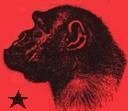|
Old World Monkeys
The Old World monkeys are found in S Asia, with a few species as far N as Japan and N China, and in all of Africa except
the deserts. Most are arboreal, but a few, such as Baboons and some Macaque
species(both shown below), are ground dwellers.
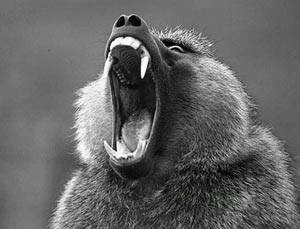
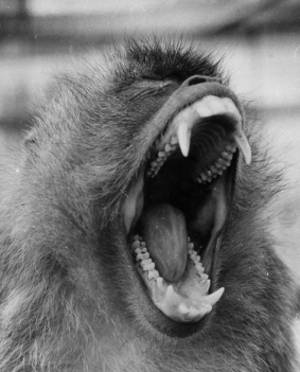
Some Old World monkeys lack tails, (They're still perfect
though); when a tail is present it may be long or short but is never prehensile (grasping). The nostrils are close together
and tend to point downward. Many species have cheek pouches for holding food, and many have thick pads (called ischial callosities),
on the buttocks (Baboons, arses crack me up!). Their gestation period is five to nine months. Adult Old World monkeys have
32 teeth. The Old World monkeys, sometimes called true monkeys, are more closely related to the apes and humans than they
are to the New World monkeys; the two monkey groups probably evolved separately from ancestral primates.
The Old World monkeys include the many species of Macaque, widely distributed throughout Africa and Asia. The Rhesus Monkey,
commonly used in laboratory experiments (by you goddam humans), is an Asian Macaque. Related to
the Macaques are the Baboons of Africa and SW Asia, as well as the Mandrill and Mangabey of Africa. The Guerezas, or Colobus monkeys (genus Colobus),
are very large, long-tailed, leaf-eating African monkeys. Their Asian relatives, the Langurs and
Leaf Monkeys, include the sacred monkeys of India. The Snub-Nosed Monkey
of China and the Proboscis Monkey of Borneo are langurlike monkeys with peculiar snouts (Hey, i'm
a chimp I can say what I like!!) The Guenons (Cercopithecus) are a large group of long-legged, long-tailed, omnivorous
monkeys found throughout sub-Saharan Africa. One very widespread guenon species is the Green Monkey,
or Vervet, with olive-brown fur, or Vervet, with olive-brown.
Old World Monkeys are employed in the Defense Militia, with many based in Special Forces such as SAS, Sea Monkeys and
Linguistics.
|
 |
|
New World Monkeys
The New World monkeys are found from S Mexico to central South America, except in the high mountains, and are classified
into two families (Callatrichids and Cebids). The New World monkeys include the Marmosets
and Tamarins (shown below), small monkeys with claws that are classified in a family of their own,
the Callithricidae. The rest of the New World monkeys are classified in the family Cebidae. They include the Capuchin
(genus Cebus- shown below), commonly seen in captivity, which has a partially prehensile tail. Prehensile tails are
found in the Spider Monkey and Woolly Monkey
as well as in the Howler Monkey, the largest member of the family, which has a voice that carries
several miles (Boy the noise those buggers make in the mornings...) Smaller forms with nonprehensile tails are the Squirrel Monkey (my girlfriends a Squirrel Monkey- Hi Jasmine if you're reading this!! xx) and Titi , the nocturnal Douroucouli , or Owl Monkey,
the Saki, and the Ouakari.
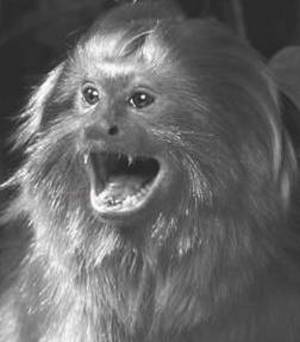
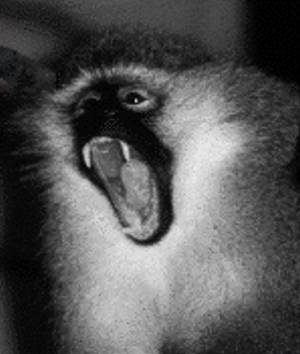
The Callatrichids are very small, while the Cebids are similar in size to the Old World monkeys. They are
all thoroughly arboreal and most have long, prehensile tails with which they can manipulate objects and hang from branches.
In most the thumb is lacking. They have widely separated nostrils that tend to point outward; they lack cheek pouches and
ischial callosities. Their gestation period is four to five months. Adults of most New World species have 36 teeth.
New World Monkeys are found mostly in The Medical Field Ops and Special Services, while many choose Infantry
and Military Police.
|
 |
|
|
 |
|
|
|
